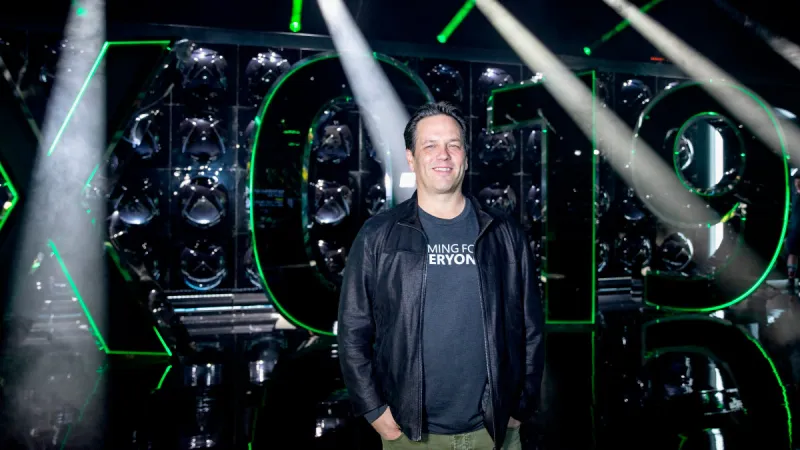


As the calendar turns to 2020, both PlayStation and Xbox are looking toward the future as they ready their next consoles. While details are just now being released for the next Xbox system, the team at Microsoft’s gaming branch is clearly thinking beyond consoles. Several pivotal members of the Xbox team spoke with us about how key philosophies on display today guide and position them for the future.
After a rough start that saw Xbox One outperformed and outsold by PlayStation 4, Xbox listened more to its player base, and in the process created an ecosystem that catered to its audience that stands in stark contrast to the reveal of the console.
The team took player feedback into account with initiatives like adding backward compatibility for past Xbox consoles, and Xbox Play Anywhere, which gives players a PC copy of an Xbox game they purchased at no additional cost. “Those come from listening to the customers,” Head of Xbox Phil Spencer says. “We’re not the first console to do back compat. I think, as a team, we embraced it as well as any other console manufacturer has and really said we want to make it part of the value proposition. That was listening to customers and what they said they wanted to do.”

To symbolize this commitment to players, Spencer and the leadership team at Xbox keep an empty chair at the leadership table to represent the customer. Spencer admits it’s a bit corny, but it’s a constant reminder to the leadership team who they’re working for and what they want. “The gamers don’t buy things because we need them to buy it; they don’t do things because we need them to go do them,” he says. “They do things because it matches what they need, and sometimes, frankly, what gamers want in the near term isn’t always the best business decision for us. But being inside Microsoft, I think because it’s a big company, we take a long-term perspective on things.”
This customer focus has resonated with fans, which puts Microsoft in position to have a crowd-pleasing release with its next console, which is due in 2020. In fact, this entire current generation, Microsoft has been giving players new and exciting initiatives. From the aforementioned backward compatibility to Project xCloud, Xbox One and Windows 10 have proven to be fertile ground for new consumer-centric ideas. However, no initiative has been a bigger shake up of the industry than the Game Pass subscription service.
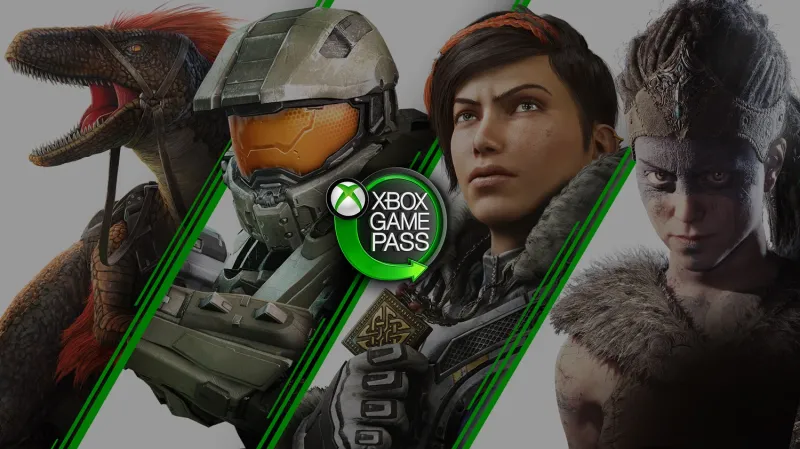
Gaming is an expensive hobby, and sampling a large swath of the industry is rarely as easy as it seems. Taking risks with new genres and keeping up with every major release is an unrealistic proposition for many. Xbox’s response to this was to introduce Game Pass, a service that allows players to pay a monthly subscription fee and download games across various developers, publishers, and genres at no additional cost on both Xbox and PC.
Currently, more than 350 games are available to subscribers across Xbox One and PC, including massive, tentpole titles like Gears 5 and The Outer Worlds and indie titles such as Slay the Spire and Lonely Mountains: Downhill. “We see players willing to take risks on new games and new genres because when you’re already in the subscription it's as easy as clicking on something, downloading the game, and starting to play,” Spencer says. “The diversity of content in Game Pass, the genres in Game Pass, the things people play, I think it’s a really healthy part of our industry.”
This approach has resonated with gamers who not only see value in how many games they instantly have access to with a single price of admission, but in how it enables them to expand their horizons. Thanks to this fact, Spencer says 2019 has seen Game Pass subscribers more than double. “When we started Game Pass, we thought the adjective gamers were going to love about Game Pass was ‘value,’” he says. “What it’s really turned into is a community that wants a curated set of great games.”
Game Pass doesn’t just empower players, however. Spencer has noticed that developers, who have often had to rely on a live-game service-based approach for profitability, are using the Game Pass subscription to branch out and explore traditional game models. “You can have games that can just be games because they live inside of a subscription that has a good business model,” he says. “It’s just an evolving financial model for where risk lives.”
With the success of Game Pass from both a development and consumer side, Xbox looks to bolster another new venture as it begins to bring its cloud-streaming service to the forefront.
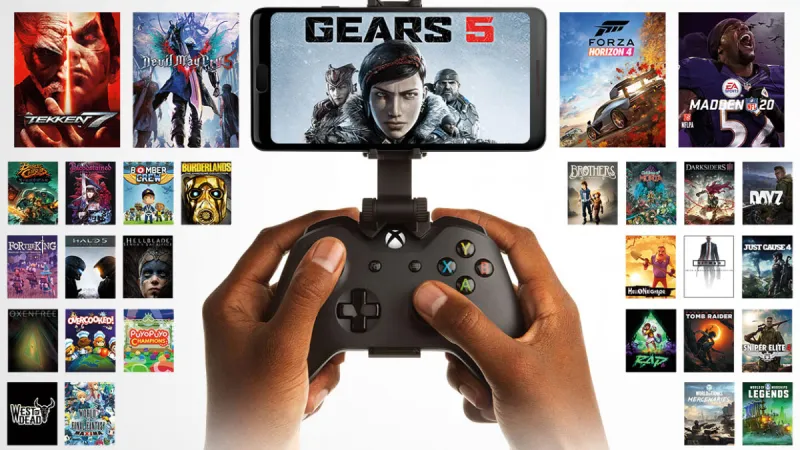
While the Xbox One generation has been one of new initiatives for Xbox, few hold as much promise as Project xCloud. The service allows players to take large portions of their Xbox One libraries to different devices. Currently in Xbox’s Preview program, Project xCloud allows players to stream their games to mobile devices over Wi-Fi or mobile data plans thanks to Microsoft’s network of Azure data centers.
Xbox clearly sees Project xCloud as an important piece of its strategy moving forward, and Microsoft has partnered with more than 20 third-party partners to bring more than 50 games to xCloud as of this writing. “[They’ve] all given their stamp of approval for their games to play with Project xCloud,” general manager of Project xCloud Catherine Gluckstein says. “It takes hardly any time at all – I think somewhere less than 30 minutes – to get a game live.”
One of the biggest potential issues game-streaming services like xCloud face is lowering latency and providing a good experience over Wi-Fi or mobile internet. In addition to leveraging the power of Azure data centers, the xCloud team is attempting to make the technological requirements as low as possible. The team is currently targeting a minimum internet speed of 10 megabits-per-second.
However, the team knows that eliminating latency in a cloud streaming service isn’t a possibility at this point in the tech’s lifespan. “What we’ve found is that consistency of latency is actually much more important than the absence of latency,” corporate vice president of Project xCloud Kareem Choudhry says. “We’re doing a lot of work to make sure it’s consistent as possible. People kind of adjusted the timing and they’re able to play a game like Killer Instinct in our public preview right now, and Tekken 7, and other ones that you would think would be very, very sensitive to latency.”
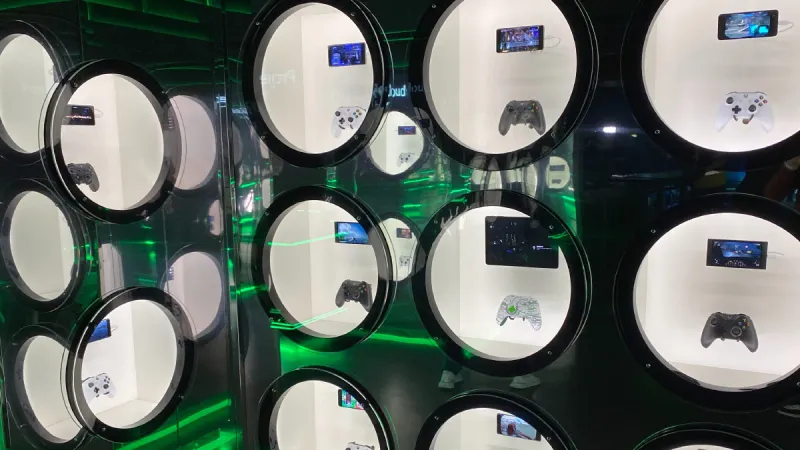
The xCloud team is continuing to drive latency as low and consistent as possible, but it’s also looking at further expansion as it continues to refine the experience. The preview program continues to expand to additional devices like PC and iOS, supporting more controllers like PS4’s DualShock 4, with the team eyeing an official release date for xCloud in 2020.
Of course, this is just the beginning of this new brand of console wars as companies like Sony and Google jockey for position with PlayStation Now and Stadia. To set itself apart from the competition, Microsoft is relying heavily on the platforms and community it has already built. “We’re not building a brand-new platform – we’re not having to start from scratch,” Choudhry says. “Some of the greatest stories we’ve seen in Preview is people who played Halo 5 years ago, they log in and it’s their save data. It’s all their achievements. All their progression. That’s just an extension of everything that we’re doing.”
Despite the optimism surrounding the technology, Spencer acknowledges that it’s still years of community feedback from maturation, and that it still falls short of the experience players get when their game is local. “The best place to play is locally; I’ll say that flat-out,” he says. “Streaming is a technology of convenience. It’s a technology of choice when you’re away from your console and you want to play.”
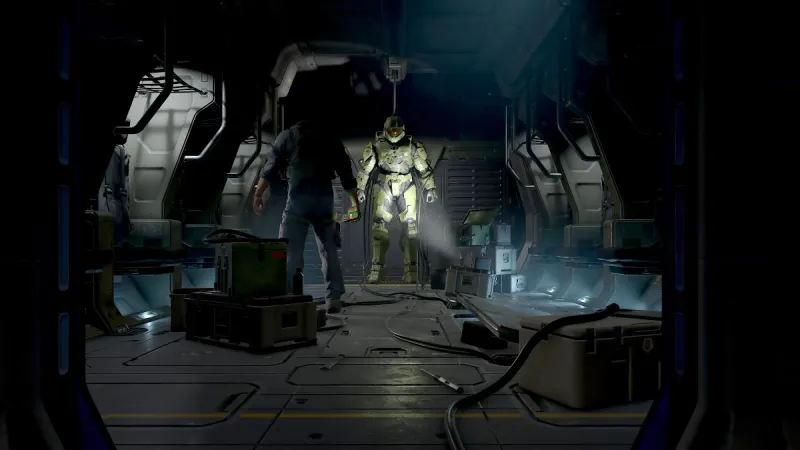
In February 2019, Xbox announced it was rebranding Microsoft Game Studios to Xbox Game Studios. The decision was a deliberate move to signal to players where the focus is going forward. “We love Microsoft, our parent company, but really, the identity is with Xbox,” head of Xbox Game Studios Matt Booty says. “What we do is for the bigger collection of hardware and services that Xbox has become.”
During the Xbox One generation, perhaps the biggest criticisms of Xbox One were related to a lack of exclusive content. Players watched as PlayStation 4 and Switch delivered myriad high-quality exclusive titles, while Xbox One became known as a home for multiplatform releases with an occasional exclusive game that often didn’t stand up to the quality of those on other platforms.
To help address those concerns, Microsoft began acquiring beloved studios like Hellblade developer Ninja Theory and The Outer Worlds developer Obsidian Entertainment. This not only assisted in immediately building a strong portfolio of studios under the company’s umbrella, but also helped set the stage for the future.
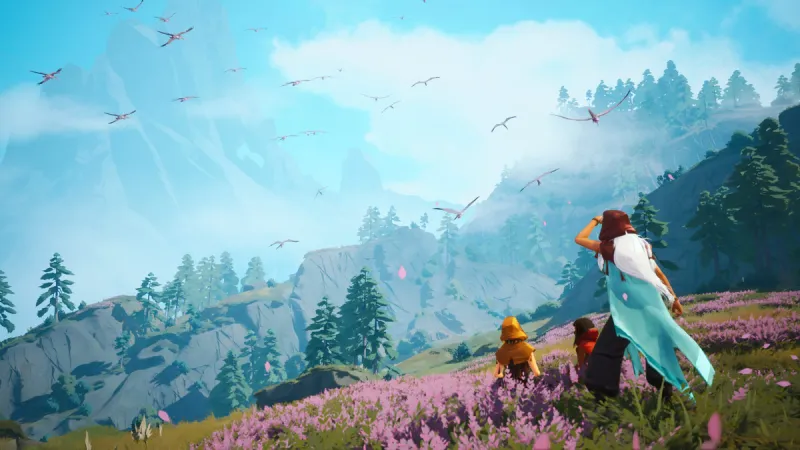
“I think we just needed to be in a better position to deliver on the promise of content,” Booty says. “We were in this acquisition and growth phase for 18 months or so. Now, we’ve shifted over more to an execution or delivery phase. When you back up to the beginning of that, as we looked ahead to [the next generation] coming, as we looked to Game Pass becoming more and more foundational to what we do, it’s so important that we have a stream of content.”
When you look at the teams in Xbox Game Studios’ current roster of developers, it’s a diverse group of teams with histories in creating across many genres and games of all scopes over the last few decades. Because many of them were staunchly independent for much of their existence, being acquired by a massive company like Microsoft sometimes carried with it concerns. To assuage these concerns, the Xbox Game Studios team used Minecraft developer Mojang, a previously independent developer that was acquired by Microsoft in 2014, as an example of how the platform holder is able to merge the two disparate cultures and provide a good experience for independent developers being acquired.

“We’re lucky enough that now we’ve got a track record, but it takes multiple examples to put people at ease,” Booty says. “We have a dedicated team in Redmond that just focuses on supporting these studios because we try to walk this line between keeping them as absolutely close to what they were pre-acquisition.”
In addition to pre-existing studios like 343 Industries and The Coalition, and the several acquisitions, Xbox Game Studios founded The Initiative, a southern California-based team helmed by Darrell Gallagher, who has worked on multiple high-profile projects with companies like Crystal Dynamics and Activision. The Initiative has also brought in top talent from other well-respected game development teams, while using its geographic ties to the film industry to tap those resources and explore new ways to push gaming forward as a medium. We’ve yet to learn anything about what The Initiative has been working on since its founding in 2018, but Booty tells me we’ll learn more over the next 12 months.
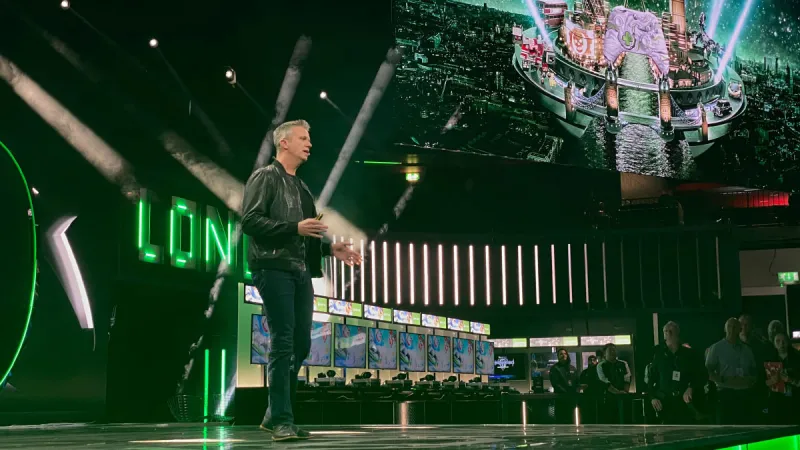
With such a diverse lineup of studios under the team’s belt, both Spencer and Booty identify one painfully absent region: Asia. While the team has been working closely with developers and publishers from Asia to bring new games to the Xbox ecosystem, the leadership team at Xbox doesn’t think it should stop there. “Sure, we could do publishing relationships there, and we might do that; I think that’s fine. In fact, I would suspect we will do some of those,” Spencer says. “But I also think as we continue to evolve our platform, having a first-party studio voice at the table that is from Asia, whether it’s Japan or another market, would be a good add for us.”
Even with the teams under the Xbox Game Studios umbrella now, Booty says Xbox is aiming high for its output of major titles going forward. Going into 2020, Booty hopes that Xbox Game Studios delivers a large release to Game Pass subscribers and Xbox players roughly every three months.
With high hopes established, Xbox is looking toward to its next major leap in technology, for which Spencer has plenty of optimism. “I think now that we’ve grown our first party to where it is today, I feel really good about the strength we have there,” he says. “Obviously, as we go into [the new generation], we have higher aspirations to build a bigger business for the Xbox console business as well, and the team is completely aligned behind doing that.”
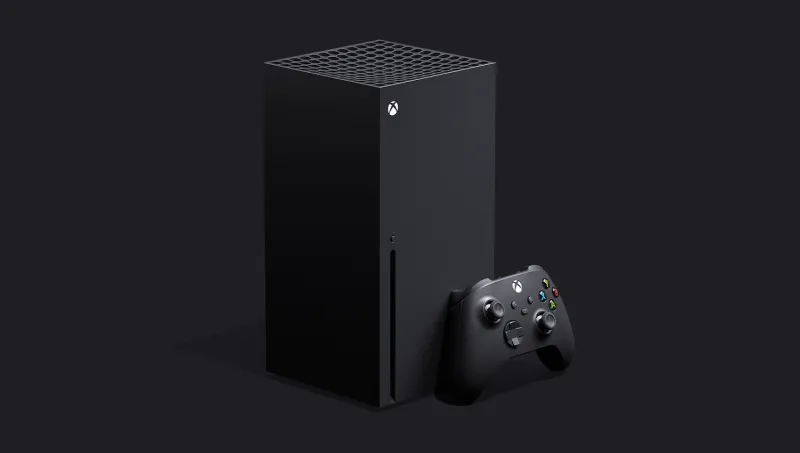
Officially unveiled during its E3 2019 press conference as Project Scarlett, Xbox Series X has remained shrouded in mystery since Spencer first hinted at it in 2018. However, at the 2019 Game Awards, Spencer and Xbox pulled back the curtains on their next-generation console. Much like its predecessor, the Xbox One X, the new Xbox delivers 4K resolution and 60 frames-per-second performance, but it takes things to the next level with the capability to hit 8K and 120 FPS. It also features a GPU with Variable Rate Shading, and has the Variable Refresh Rate and Auto-Low Latency Mode already featured in Xbox One models. In addition, all games, controllers, and accessories that work on Xbox One will work on next Xbox consoles including Series X, but Xbox is remaining tight-lipped on other potential features, or how it will leverage current ventures such as Game Pass and xCloud in new ways.
Coming off of Xbox One, Spencer is excited for the team that did such a strong job of righting the ship this generation to get a crack at creating an all-new platform. “I think a lot of our learning played out during the generation as we were listening to fans and customers on what we needed to evolve,” he says. “I love the fact that now this team gets to create a platform that is kind of uniquely ours to go create. Because many people on the Xbox leadership team today kind of inherited this platform, and I think they’ve done a great job. But [Series X] is the platform that this team can go create. I’m incredibly encouraged by the work.”
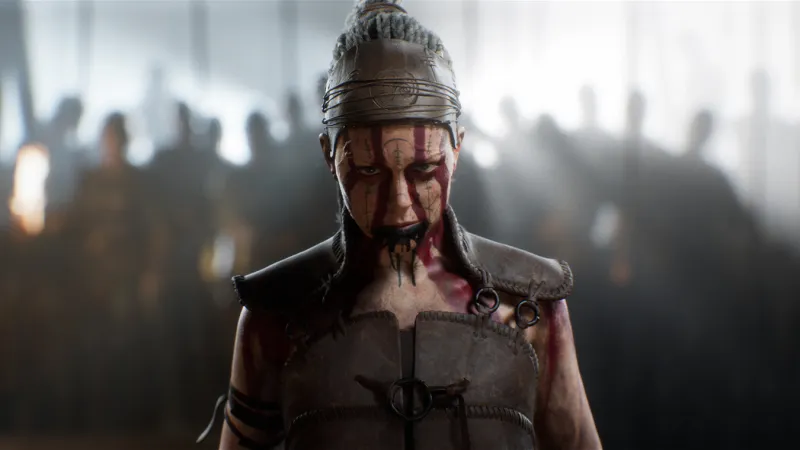
Xbox already has a powerhouse of a console with the Xbox One X, but it hopes Series X can not only one-up the 2017 mid-generation refresh, but deliver something tactile to both developers and players. “We talked to our creators; we went out and talked to third parties about some of the trends that we saw in gaming and said we want to build a platform that can hit this capability because there’s no reason for us to go sell somebody a console just to sell them a new console,” Spencer says. “I want to sell them a new console that actually gives them new capabilities that they can see and feel.”
Now, with aggressive and innovative plans in place, Xbox is poised to make a push to become the go-to name for gaming across many parts of the globe. We won’t know how many of these various pieces will further fit together under Series X for a while, but Phil Spencer, Matt Booty, and the teams beneath them are confident they’ve positioned themselves to make a run at greatness.
This article originally appeared in the January 2020 issue of Game Informer. It has been modified and updated with new information.

Explore your favorite games in premium print format, delivered to your door.